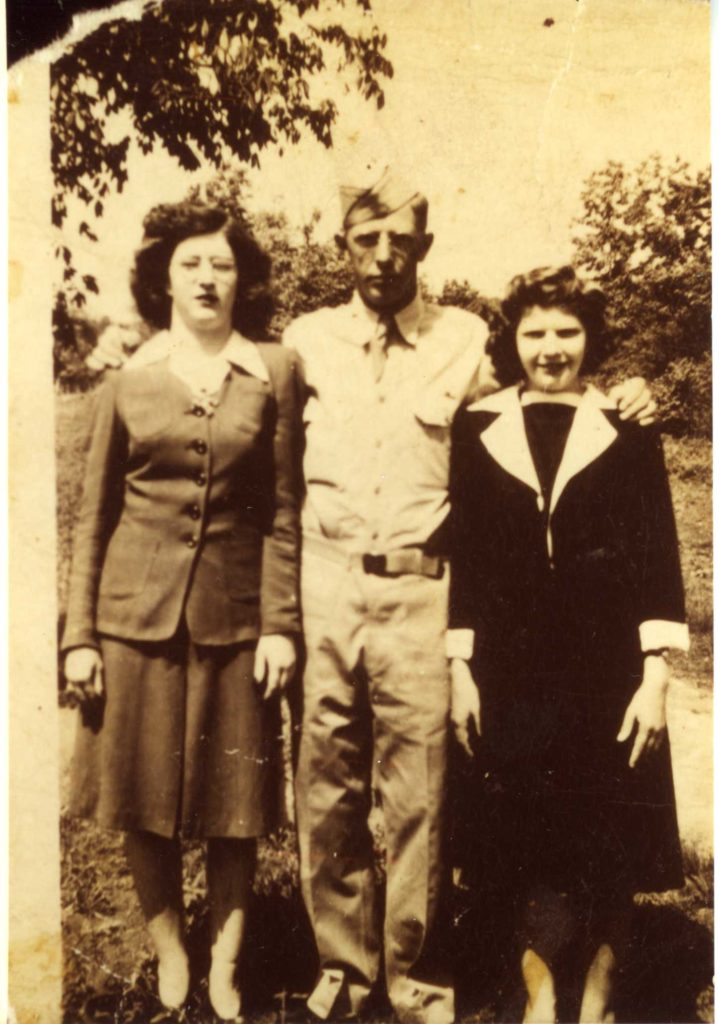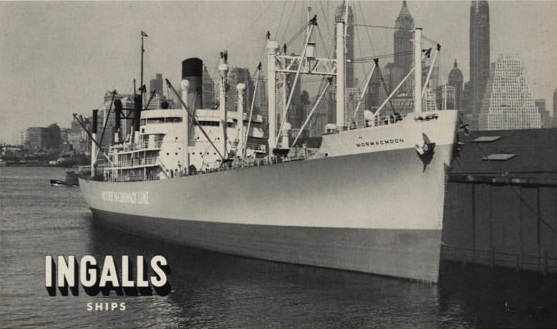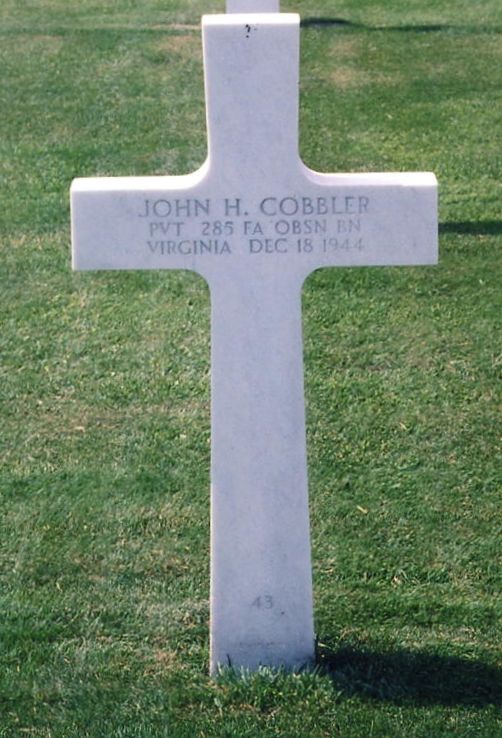
John Henry Cobbler was born to Henry Gordon Cobbler and Annie Mae Cobbler on April 2, 1922, in Henry County, Virginia. Henry and Annie had eight children, two of which were sons. John Henry Cobbler, who went by Henry, was the oldest son. He grew up in Henry County, known for furniture and tobacco, where his ancestors had lived for about a century before Henry was born.

Henry was working for American Furniture Company when he registered for selective service on June 30, 1942. He was selected for service in January and joined service on January 13, 1943. Henry, and 40 other Henry County men, boarded a train for Camp Lee, VA. From Camp Lee, joined company B of the 285th Field Artillery Observation Battalion at Camp Gruber. After spending months at Camp Gruber, they were relocated to Fort Sill. Company B was selected as the training battalion for field artillery observation. Field artillery observation use multiple observation posts, sound, light and radar, to determine locations of artillery. This was used for identifying the location of the enemy, for adjustments to our artillery and intelligence reports. Henry’s military occupational specialty code was 230, Topographic Surveyor.

In May of 1944, Henry was on furlough for thirteen days. In mid August 1944, Company B boarded a train headed for Camp Shanks, NY. Camp Shanks was the largest World War II embarkation camp and was known as “Last Stop, USA.” Company B was at Camp Shanks for six days before leaving for Europe on the Mormacmoon. During the voyage, one of the tanker ships in their convoy was struck by a torpedo. They arrived at Cardiff, Wales on August 31, 1944. The following couple weeks were spent at Camp Stockton, Dorchester and Portland Harbor. They left Portland Harbor aboard an LCT on September 17, 1944 and arrived at Omaha beach the following day. The next few days were spent crossing France and they entered combat on September 24, 1944. Moving every few days was typical until mid-October when they arrived at Huertgen Forest. Enemy artillery was hammering the allied forces in this area and the members of the 285th were there to pinpoint this threat. They were identifying dozens of enemy locations on a daily basis. Company B remained in this area until December 2, 1944 when it moved to Schevenhutte. On December 17, 1944, they left Schevenhutte, destined for Bewir, Luxembourg, but they did not make it.
On December 16, 1944, the Germans launched the Ardennes counteroffensive. They were to push through a weak section of the Allied line and take the port of Antwerp. The 285th’s path to Biwer on the 17th had them crossing paths with part of the 1st SS Panzer division. The two forces made contact near Baugnez. The troops of the 285th quickly realized they were outgunned and surrendered. These POWs were gathered in a nearby field, about 120 Americans total. After some time, the SS troops started firing on the American troops in what became known as the Malmedy massacre. This was the worst atrocity committed against American troops by the Germans. After the initial shooting stopped, some of the SS troops walked among the field, killing any American soldier that showed signs of life. A surprising number of American troops were somehow able to escape. Some fled when the shooting started, others fell to the ground, trying to show no signs of life, waiting for hours until they felt it was safe to move. In the end, 84 American soldiers died as a result of the Malmedy massacre. Henry was severely wounded, but was able to escape the field. He was able to get to a nearby aid station, where he spoke to a couple other men from company B who were also able to escape the field alive. Henry died of his wounds on the way to the hospital on December 18, 1944. Henry’s final resting place is at the Henri-Chapelle American Cemetery in Belgium.

Sources and further reading
- https://www.ww2online.org/search-page?keyword=285th – Interview with several survivors of the Malmedy massacre
- https://sill-www.army.mil/firesbulletin/archives/1948/NOV_DEC_1948/NOV_DEC_1948_FULL_EDITION.pdf – Field Artillery Journal, Nov-Dev 1948
- https://books.google.com/books?id=HfqtCQAAQBAJ&printsec=frontcover#v=onepage&q&f=false – Flash – Bang! The Unit History of the 285th Field Artillery Observation Battalion